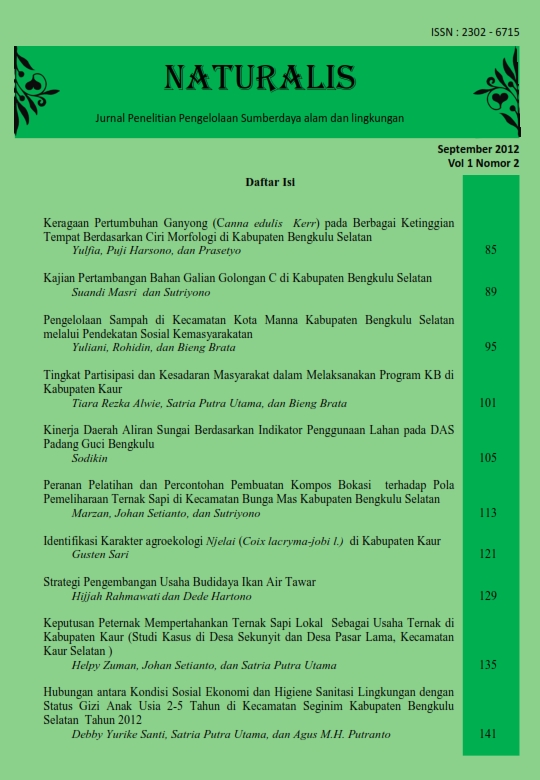Teknik Pengelompokan Kelas Kualitas Kayu yang Diserang Rayap dengan Metode Skor-ing
Abstract
Rayap adalah serangga yang bertanggung jawab terhadap degradasi kayu dan bahan bersellulosa lain di lingkungan tanah (Coulson & Lund, 1973). Kayu dan produk kayu seperti kertas, dan semua produk dengan struktur kayu akan dikonsumsi rayap (Peralta et al. 2004). Rayap merupakan salah satu hama yang menimbulkan kerusakan hebat dan kerugian besar pada produk-produk kayu (Eaton dan Hale, 1993 & Haygreean dan Bowyer, 1993). Salah satu cara untuk menguji ketahanan suatu jenis kayu terhadap serangan rayap adalah dengan uji kubur (grave yard test), sementara sistim penilaiannya dapat dikelompokan berdasarkan skoring (Febrianto et al, 2000). Tujuan penulisan artikel ini adalah untuk menetapkan tehnik pengelompokan yang tepat dan akurat berdasar skoring untuk kayu-kayu yang telah diserang rayap. Dalam hal ini tehnik yang digunakan adalah dimulai dengan menghitung jumlah serangan pada 2 permukaan sampel uji secara rinci dan teliti. Tahap selanjutnya dalam pengolahan data adalah dengan menganalisa secara perhitungan statistik sederhana. Sampel uji kayu-kayu yang telah diserang rayap diambil dari data sekunder penelitian mahasiswa dalam bentuk skripsi. Diharapkan dengan adanya tehnik pengelompokan ini, hasil skoring akan tepat dan akurat.
Full text article
Authors
Copyright (c) 2022 Nani Nuriyanti Nuriyanti, Saprinurdin Saprinurdin, Casia Nursyifa Nursyifa

This work is licensed under a Creative Commons Attribution-ShareAlike 4.0 International License.
An author who publishes in Naturalis agrees to the following terms:
Author retains the copyright and grants the journal the right of first publication of the work simultaneously licensed under the Creative Commons Attribution-ShareAlike 4.0 License that allows others to share the work with an acknowledgement of the work's authorship and initial publication in this journal
The author is able to enter into separate, additional contractual arrangements for the non-exclusive distribution of the journal's published version of the work (e.g., post it to an institutional repository or publish it in a book) with the acknowledgement of its initial publication in this journal. The author is permitted and encouraged to post his/her work online (e.g., in institutional repositories or on their website) prior to and during the submission process, as it can lead to productive exchanges, as well as earlier and greater citation of the published work (See The Effect of Open Access).
Submission of a manuscript implies that the submitted work has not been published before (except as part of a thesis or report, or abstract); that it is not under consideration for publication elsewhere; that its publication has been approved by all co-authors. If and when the manuscript is accepted for publication, the author(s) still hold the copyright and retain publishing rights without restrictions. Authors or others are allowed to multiply an article as long as not for commercial purposes. For the new invention, authors are suggested to manage its patent before published. The license type is CC-BY-SA 4.0.
Naturalis is licensed under a Creative Commons Attribution-ShareAlike 4.0 International License.

